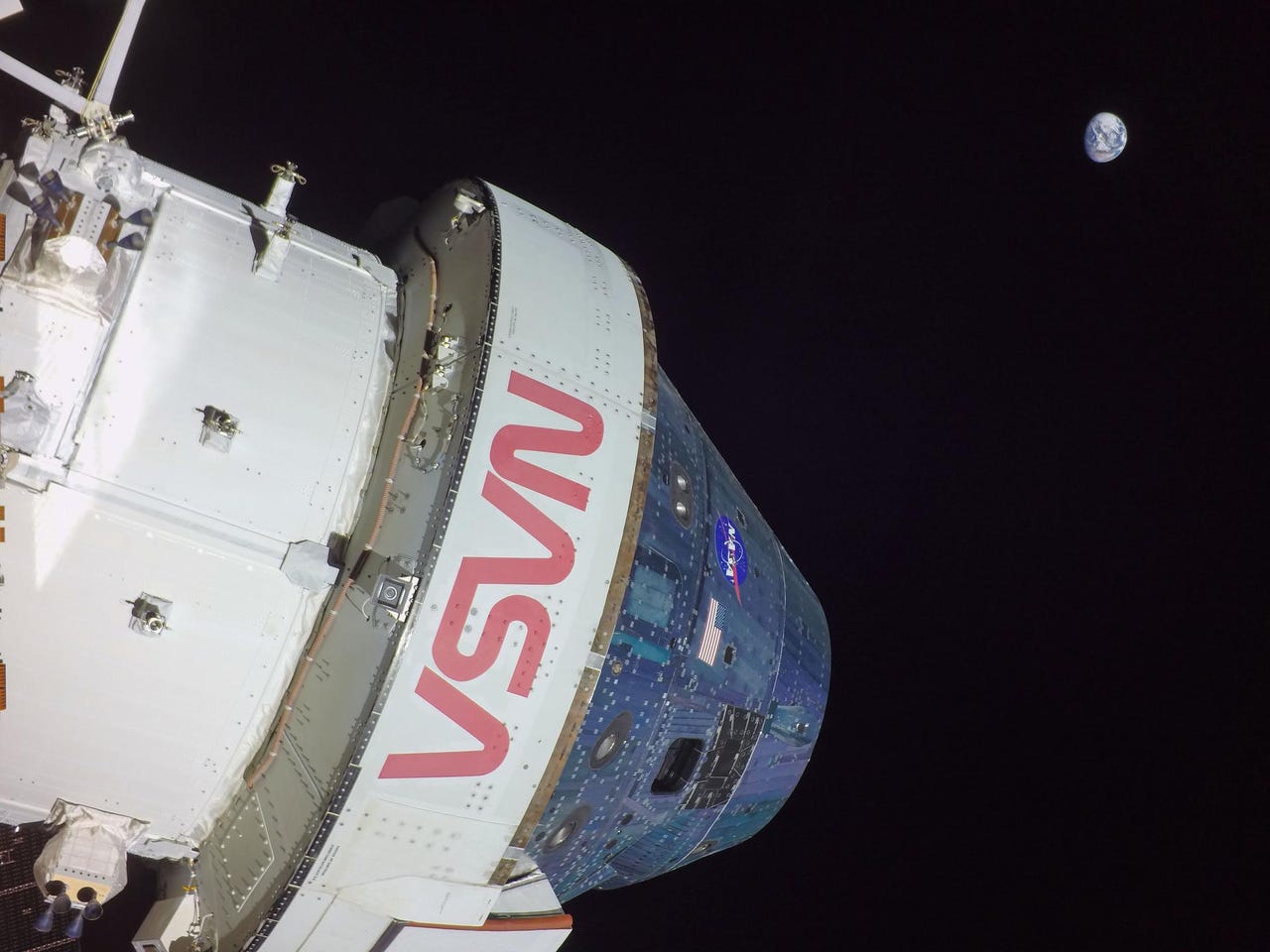
































On flight day 11, NASA'S Orion spacecraft captured imagery looking back at the Earth from a camera mounted on one of its solar arrays.
Image: NASANASA's Orion spacecraft has just reached 268,563 miles from Earth -the farthest it will go during the uncrewed Artemis I mission.
Orion is now about 20,000 miles farther from Earth than the farthest the Apollo 13 spacecraft travelled during its 1970 mission. Apollo 13 was deemed a "successful failure" because NASA brought the crew safely back to Earth after aborting its lunar landing due to an explosion in the service module.
Also: What is Artemis? Everything you need to know about NASA's new moon mission
On Flight Day 13, Orion made it midway through its 25.5 day mission and is still amid its six-day distant retrograde orbit (DRO) of the Moon. Orion entered the fuel-saving DRO on Saturday and after this point will circle the moon and return to Earth with a planned splashdown in the Pacific Ocean on Sunday, December 11, after which NASA's Exploration Ground Systems team and the US Navy will recover it.
"Because of the unbelievable can-do spirit, Artemis I has had extraordinary success and has completed a series of history making events," said NASA Administrator Bill Nelson. "It's incredible just how smoothly this mission has gone, but this is a test. That's what we do -we test it and we stress it."
NASA engineers opted to skip Monday's planned orbital maintenance burn because Orion was already on the right trajectory in DRO. NASA is looking at adding seven more test objectives focusing on the spacecraft's thermal environment and propulsion system. The next major tests will be evaluated during entry, descent, splashdown and recovery. So far, 37% of test objectives have been accomplished or are in the process of being so.
As of Monday, approximately 5,640 pounds of propellants have been used, up from 3,715.7 pounds of propellant used by last Monday. NASA says Orion has currently used about 150 pounds less propellant than prelaunch expected values. It also has more than 2,000 pounds of margin beyond what teams plan to use for the Artemis I mission.
Also NASA teams have sent more than 2,000 files from Orion to Earth. NASA briefly lost communications with Orion earlier this week after reconfiguring the communication link between it and the Deep Space Network.
On Sunday, Artemis I team members tested the Orion's star trackers and began another reaction control thruster flight test. Orion's star trackers and inertial measurement units -which consist of gyros and three accelerometers -are critical parts of Orion's guidance, navigation and control system. The star trackers are important for measuring the positions of stars to help determine the spacecraft's orientation. The inertial measurement units help compute Orion's position, velocity, and attitude.
Also: How you can track Orion's trip to the moon in real time
NASA teams on Sunday also tested the Callisto payload onboard Orion. Lockheed Martin teamed up with Amazon and Cisco for the Callisto video comms and AI voice setup, which is located in Orion's cabin. NASA is testing the Alexa voice-activated assistant and Cisco WebEx video technology in a deep space environment.
NASA planned to transmit video and audio from Mission Control Center at Johnson to Orion where video of the participants is displayed on a tablet and audio from a speaker, to test how this custom version of Alexa performs. Since Alexa in space can't quickly process information in the cloud on Earth, Callisto uses NASA's Deep Space Network and a local database aboard the spacecraft to communicate with Alexa and respond.
 Tags quentes :
Inovação
Espaço
Tags quentes :
Inovação
Espaço